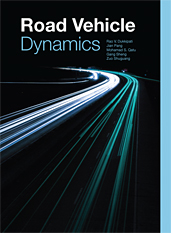Technical Paper
On Chaos and Bifurcation in Nonlinear Driver-Vehicle System Probabilistic Dynamics
2012-04-16
2012-01-0522
The vehicle system is actually a strongly nonlinear system with stochastic parameters. In this paper, the nonlinearities of suspension, tire and seat are analyzed, and the nonlinear dynamics model of driver-vehicle system with 8 degrees of freedom (DOFs) is built. The bifurcation and chaotic motion of the deterministic system under Sinusoid excitations considering the time delay between the front and rear tires are studied. Then, the stochastic feature of the equivalent stiffness and damping coefficients of suspension, tire and seat are assumed to be the normal distribution, and the nonlinear model with random parameters is obtained. The nonlinear dynamics of stochastic nonlinear driver-vehicle system is analyzed and compared through numerical simulation.


